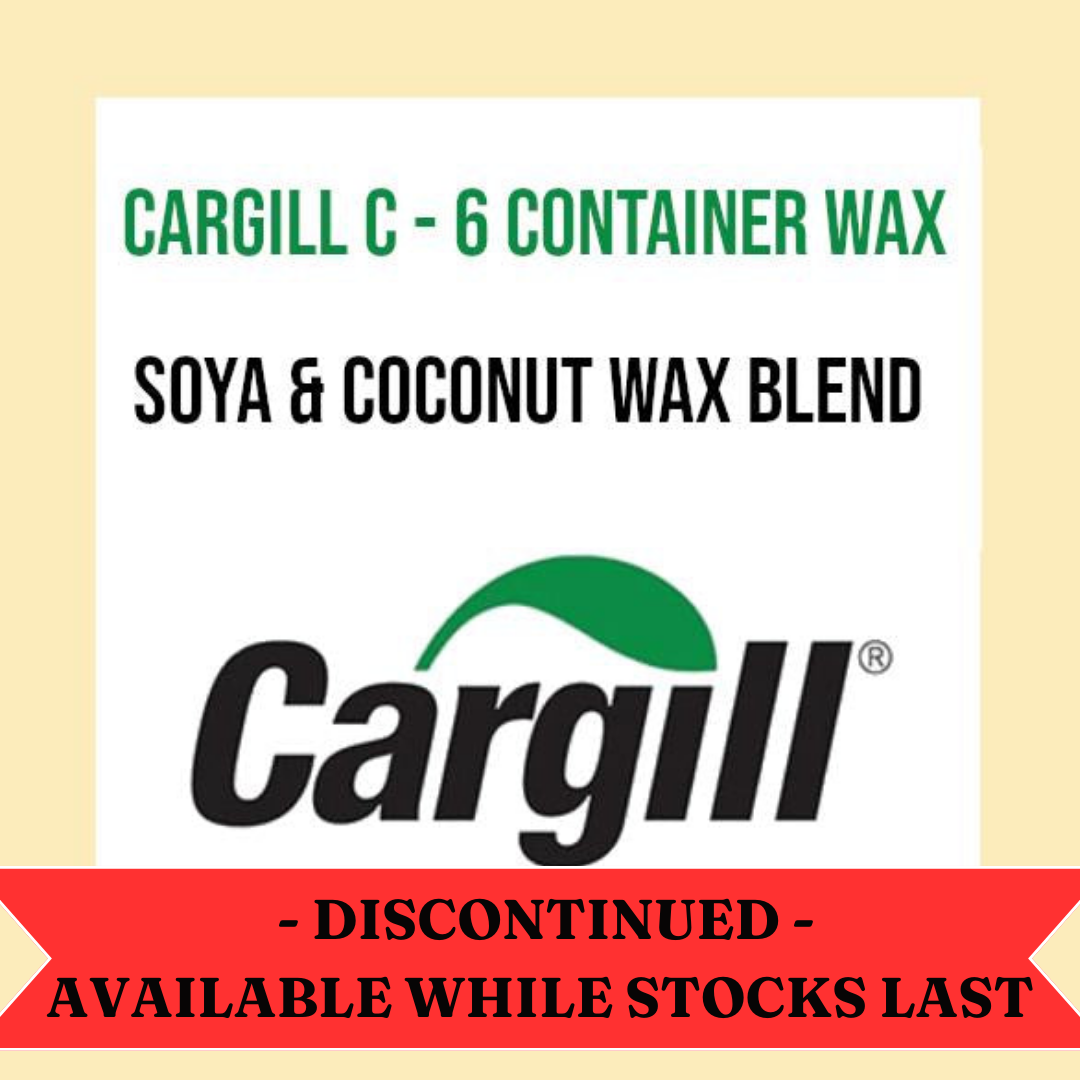Soya & Coconut Wax Blend C-6 Container Wax.
We regret to inform you that C6 wax will be discontinued from our shop due to a supply chain issue.
A sumptuous high-performance vegetable based blended wax, particularly suited for container candles. It allows for higher pouring temperatures which can help decrease candle production time.
C-6 wax is supplied in slab form, is quite soft and is very easy to chunk up to fit into your melting device. It is not just Coconut Wax but is made up of a blend of soy wax and hydrogenated coconut oil. It is not soft like coconut oil and it is also not as hard as any of the soy waxes.
C-6 has excellent glass adhesion, a smooth finish, and resists frosting. This wax incorporates dyes well resulting in vibrant colours in your finished products. It has an exceptional scent throw with both fragrances and essential oils.
Colour of wax can vary depending on harvests.
General Use Information
Containers
Containers should be of suitable quality, clean and free of contaminants. Containers should be at least at room temperature, although pre-heating the containers to approximately 45 – 50°C can be beneficial. Avoid using containers containing copper and zinc as this may accelerate discolouration.
Colour
Most dyes work with C-6 Soy Coconut Wax including powder, liquid or our Bekro dyes. When using powder dyes, heat the wax to approximately 75-85°C, add the dye and mix until dissolved. If you wish to make your candle darker, add a little black dye to the colour you are using. To lighten use white dye. In all cases dyes and fragrances should be added when the wax is completely liquid.
Fragrances
This may be used with fragrance at levels up to 5-10% will give an excellent scent throw when using high quality fragrances. Burn pool size and depth greatly affect fragrance the throw so correct wicking is essential.
Wicking
Natural waxes tend to require larger wick sizes than traditional paraffin waxes. Fragrance, colour, and candle configuration have a great impact on the best wick choice. However, a wick that is too large may cause sooting and accelerated burn times. Too small a wick will cause tunnelling and produce a smaller flame but keep wicks trimmed to 5mm in all cases.
If you experience poor flame quality or stability, try a different type of wick. Test burning should be done after the candle has had a chance to sit for 48 hours after pouring. We recommend trying TCR wicks as a good start point with this wax.
Melting
The melting temperature of C-6 is 75-85°C. Do not heat the wax above 93.3°C. If wax is held at higher temperatures for long periods of time, it will discolour. Allow the wax to cool to your desired pour temperature, add the fragrance and mix well but only when the wax is liquid. Be sure to stir/mix the wax while melting.
Pouring
Pour temperatures may vary according to container type & size, fragrance & dye used and the effects the candle maker wishes to achieve.
After the wax has been completely melted reduce the heat on the wax so that the wax cools to a temperature of 48.9 to 73.8°C. This will reduce cracking and discoloration of the wax after it has cooled. Pour Temperature should be matched to ambient room temperature.
Candle Cooling
Cool undisturbed candles at room temperature (about 21-24°C). Candles should be allowed to sit undisturbed for 48 hours before test burning.
Test Burn
Test burn the candle for burn pool diameter and “mushrooming” after it has cooled. Mushrooming is when carbon and/or other substances build up on the end of the wick interfering with combustion.
Mushrooming can cause sooting and poor odours. Try different wicks until you have your desired burn pool diameter and a good clean flame. As always, we recommend every combination of container, wax, dye, fragrance, and wick must be tested for burn quality.
Customer satisfaction is very important to us. If you have any queries, please do not hesitate to contact us.
Remember we offer free shipping to UK Mainland (excluding Highlands & Islands) for orders over £75 Exclusive of VAT.
Please note. All images are ©Copyright.
















